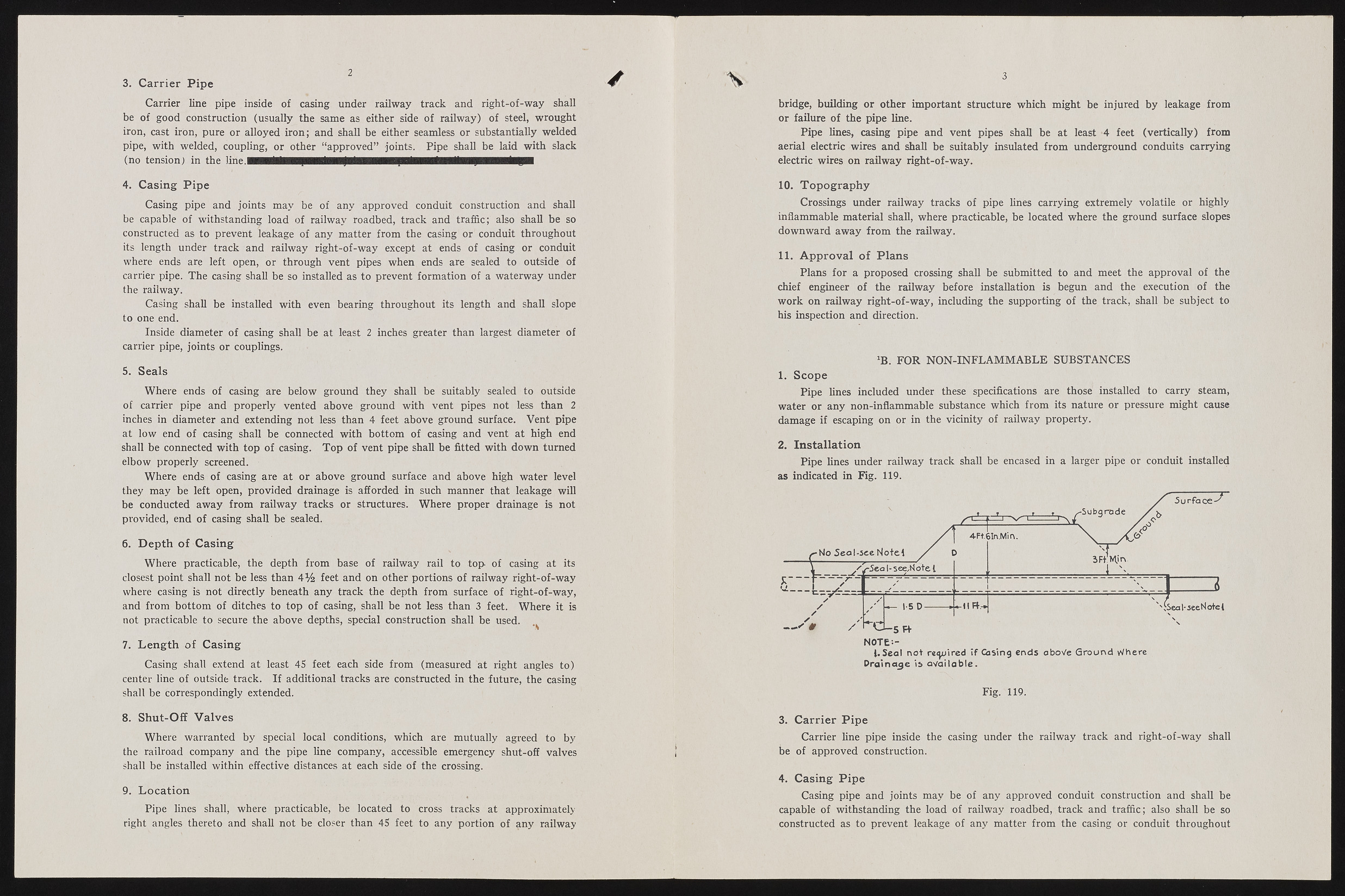Copyright & Fair-use Agreement
UNLV Special Collections provides copies of materials to facilitate private study, scholarship, or research. Material not in the public domain may be used according to fair use of copyrighted materials as defined by copyright law. Please cite us.
Please note that UNLV may not own the copyright to these materials and cannot provide permission to publish or distribute materials when UNLV is not the copyright holder. The user is solely responsible for determining the copyright status of materials and obtaining permission to use material from the copyright holder and for determining whether any permissions relating to any other rights are necessary for the intended use, and for obtaining all required permissions beyond that allowed by fair use.
Read more about our reproduction and use policy.
I agree.Information
Digital ID
Permalink
Details
More Info
Rights
Digital Provenance
Publisher
Transcription
2 3. Carrier P ipe Carrier line pipe inside of casing under railway track and right-of-way shall be of good construction (usually the same as either side of railway) of steel, wrought iron, cast iron, pure or alloyed iron; and shall be either seamless or substantially welded pipe, with welded, coupling, or other “approved” joints. Pipe shall be laid with slack (no in the line. 4. Casing P ipe Casing pipe and joints may be of any approved conduit construction and shall be capable of withstanding load of railway roadbed, track and traffic; also shall be so constructed as to prevent leakage of any matter from the casing or conduit throughout its length under track and railway right-of-way except at ends of casing or conduit where ends are left open, or through vent pipes when ends are sealed to outside of carrier pipe. The casing shall be so installed as to prevent formation of a waterway under the railway. Casing shall be installed with even bearing throughout its length and shall slope to one end. Inside diameter of casing shall be at least 2 inches greater than largest diameter of carrier pipe, joints or couplings. 5. Seals Where ends of casing are below ground they shall be suitably sealed to outside of carrier pipe and properly vented above ground with vent pipes not less than 2 inches in diameter and extending not less than 4 feet above ground surface. Vent pipe at low end of casing shall be connected with bottom of casing and vent at high end shall be connected with top of casing. Top of vent pipe shall be fitted with down turned elbow properly screened. Where ends of casing are at or above ground surface and above high water level they may be left open, provided drainage is afforded in such manner that leakage will be conducted away from railway tracks or structures. Where proper drainage is not provided, end of casing shall be sealed. 6. D epth of Casing Where practicable, the depth from base of railway rail to top of casing at its closest point shall not be less than 4 Yz feet and on other portions of railway right-of-way where casing is not directly beneath any track the depth from surface of right-of-way, and from bottom of ditches to top of casing, shall be not less than 3 feet. Where it is not practicable to secure the above depths, special construction shall be used. 7. L ength of Casing Casing shall extend at least 45 feet each side from (measured at right angles to) center line of outside track. If additional tracks are constructed in the future, the casing shall be correspondingly extended. 8. Shut-O ff V alves Where warranted by special local conditions, which are mutually agreed to by the railroad company and the pipe line company, accessible emergency shut-off valves shall be installed within effective distances at each side of the crossing. 9. L ocation Pipe lines shall, where practicable, be located to cross tracks at approximately right angles thereto and shall not be closer than 45 feet to any portion of any railway 3 ! % bridge, building or other important structure which might be injured by leakage from or failure of the pipe line. Pipe lines, casing pipe and vent pipes shall be at least 4 feet (vertically) from aerial electric wires and shall be suitably insulated from underground conduits carrying electric wires on railway right-of-way. 10. Topography Crossings under railway tracks of pipe lines carrying extremely volatile or highly inflammable material shall, where practicable, be located where the ground surface slopes downward away from the railway. 11. Approval o f Plans Plans for a proposed crossing shall be submitted to and meet the approval of the chief engineer of the railway before installation is begun and the execution of the work on railway right-of-way, including the supporting of the track, shall be subject to his inspection and direction. XB. FOR NON-INFLAMMABLE SUBSTANCES 1. Scope Pipe lines included under these specifications are those installed to carry steam, water or any non-inflammable substance which from its nature or pressure might cause damage if escaping on or in the vicinity of railway property. 2. Installation Pipe lines under railway track shall be encased in a larger pipe or conduit installed as indicated in Fig. 119. N O T E ; - i. Seal n o t required If Casing ends aboVe G ro u n d W here D ra in a g e is a v a ila b le . Fig. 119. 3. Carrier P ipe Carrier line pipe inside the casing under the railway track and right-of-way shall be of approved construction. 4. Casing P ipe Casing pipe and joints may be of any approved conduit construction and shall be capable of withstanding the load of railway roadbed, track and traffic; also shall be so constructed as to prevent leakage of any matter from the casing or conduit throughout

